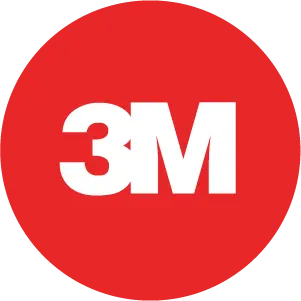
Many people in the business world and corporate America recently “celebrated” two years of working remotely due to the COVID-19 pandemic. Others have moved to a hybrid approach, splitting their time between working from home and in the office. And then there’s the population who have fully migrated back into the office. They’re back to business suits and hour and a half commutes five days a week.
Along with a shift in the work environment, building owners’ and property managers’ priorities are also changing. Rather than worrying about high vacancy rates and the need to attract and retain tenants — although still a concern — the need to address local law mandates is reemerging as a paramount priority.
The pandemic pressed pause on many local law energy efficiency mandates. Now that we’re out of immediate survival mode, we must revisit the need for the long-term longevity of our planet and its occupants.
Table of Contents
Local Law Energy Efficiency Mandates
Cities such as New York, Boston, and Washington, D.C., are requiring building owners and property managers to implement energy-efficient solutions to lower their buildings’ carbon footprints. Several years of tracking the energy consumption of large commercial buildings has provided benchmarks that must be achieved. Otherwise, fines will be levied, and profitability will plummet.
Each city’s local laws outline the energy efficiency mandates required within each municipality. For example, in New York, Local Law 97 (LL97) calls for a 40% reduction in carbon emissions by 2030. By 2050, they aim for an 80% reduction. Boston’s Building Energy Reporting & Disclosure Ordinance (BERDO) also requires an 80% greenhouse gas emissions reduction by 2050. Clean Energy DC mandates a 50% decrease in emissions by 2032 and 80% by 2050.
These years may sound distant, but they’re actually not that far away. Meeting these goals requires continuous incremental improvement.
Meeting Energy Efficiency Mandates
In order to meet these requirements for greenhouse gas emissions reduction, building owners and property managers must address several factors. Many turn to lighting and HVAC improvements. However, complying with the strict regulations often necessitates retrofitting building envelopes as well.
The glass-intensive architecture of most skyscrapers results in poor temperature regulation. The sun’s infrared rays penetrate the glass, causing interior temperatures to rise and sending the HVAC system into overdrive. Conversely, the heated air generated by the HVAC system is also lost through exterior glass windows and walls. Both situations result in unnecessary energy expenditure.
Traditional single-pane glass offers little climate control. Double-pane, triple-pane, and Low-E glass provide enhanced temperature regulation. Replacing existing glass with one of these energy-efficient alternatives can help lower a building’s carbon footprint, but not without a new set of drawbacks and stipulations.
Ideally, these building envelope improvements would have already been implemented while office employees were leisurely working from the comfort of their homes. However, building owners and property managers were hesitant to invest heavily in their properties when rent payments had slowed to a trickle and intent to vacate notices were forming skyscrapers of their own atop leasing managers’ desks. Not to mention, existing skyscrapers were not necessarily engineered to withstand the weight of an additional pane of glass.
Now that workers are returning to the office in droves, did building owners and property managers miss the boat on retrofitting their building envelopes with a more energy-efficient material? Rest assured that there is still time, and there’s actually a superior solution for achieving the same goal.
Reduce Carbon Emissions with 3M Thinsulate Insulating Window Film
Rather than replace single-pane windows with double-pane, double-pane with triple-pane windows, or traditional glass with Low-E glass, building owners can invest in window film for nearly the same efficiency improvement. In fact, building owners and property managers who leverage 3M Thinsulate Insulating Window Film to improve their buildings’ energy efficiency reap several benefits over those who opt for glass replacement, including:
- Support continuity of operations
- Maintain structural integrity
- Reduce waste
- Save money
Support Continuity of Operations
Replacing windows causes quite the disruption, displacing workers for days or even weeks. Window film installation, on the other hand, is a very discreet process. Installers in the prestigious 3M Authorized Dealer Network can apply window film with only a few feet of floor space. The unobtrusive nature of window film installation allows for “business as usual.”
Maintain Structural Integrity
When the architects originally designed a forty-story skyscraper, they consulted a structural engineer to determine how much weight the building could support. Essentially doubling or tripling the weight of a building’s windows by replacing single-pane windows with double or triple-pane glass is simply not an option in most cases. Fortunately, applying window film to existing glass only minimally impacts the windows’ weight, making it a more feasible solution.
Reduce Waste
The carbon footprint reduction mandates aim to benefit the environment. So it only makes sense that the process of achieving improved energy efficiency creates as little waste as possible. Removing a skyscraper’s existing windows and discarding the material in a landfill creates significant waste. On the other hand, window film installation utilizes the existing glass, keeping waste to a minimum.
Save Money
Not only will installing 3M Thinsulate Window Film help building owners and property managers avoid fines, but it will also save them money compared to other building envelope improvement alternatives. Window film installation can cost as little as one-tenth of the price of window replacement.
Retrofit Your Building Envelope for Energy Efficiency Mandates with 3M Window Film
As employees return to in-person work, the opportunity for building envelope improvements is not lost. Request a complimentary energy efficiency audit to learn how 3M Thinsulate can help you reduce greenhouse gas emissions and comply with local energy efficiency mandates.

Energy Products Distribution is a Master Distributor of 3M Window Films, 3M Paint Protection Films, 3M Wrap Film Series 2080, 3M Protection Wrap Films, 3M Architectural Finishes, 3M Ceramic Coatings, and Windshield Skin. We sell our products to professional installers throughout the US who provide turnkey installations (labor and material) to end-users in the automotive, commercial, government, and residential markets. Contact us to learn more about the benefits of these products.









